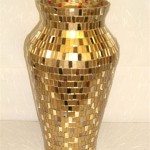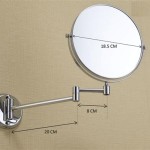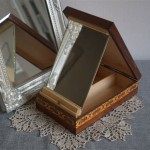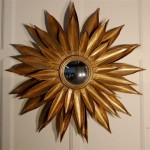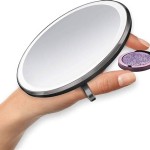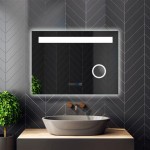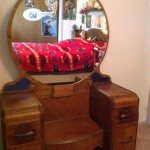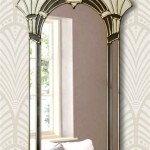How To Remove Ceiling-Height Mirrors From Walls
Removing ceiling-height mirrors from walls is a task that requires careful planning, preparation, and execution. Due to their size and weight, these mirrors pose a significant risk of breakage and injury if not handled properly. This article provides a comprehensive guide on how to safely remove ceiling-height mirrors, emphasizing the importance of each stage of the process.
Assessing the Situation and Preparing
The first critical step is to thoroughly assess the situation. This involves understanding how the mirror is attached to the wall, the type of wall it is attached to (drywall, plaster, concrete, etc.), and the surrounding environment. Proper assessment helps determine the necessary tools, the number of assistants required, and the potential challenges that may arise during the removal process.
Begin by examining the edges of the mirror for any visible fasteners. These may include clips, screws, adhesive, or a combination of these methods. Note the type and location of each fastener. Pay close attention to any areas where the mirror appears to be particularly well-adhered to the wall. This is often the case when heavy-duty adhesive is used.
Next, evaluate the wall surface. Damaging the wall during mirror removal is a common concern. Identify the wall material to determine the best approach for minimizing damage. Drywall, for example, is more susceptible to damage than plaster or concrete. If possible, consult with a professional contractor or handyman to get their opinion on the best removal technique for your specific wall type.
Furthermore, clear the area around the mirror. Remove any furniture, decorations, or other obstructions that could impede movement or be damaged during the removal process. Cover the floor beneath the mirror with protective materials, such as drop cloths or thick blankets. This will help cushion the impact if the mirror accidentally slips during removal and protect the flooring from scratches or damage.
Gather the necessary tools and materials. Essential items include: * Safety glasses: To protect your eyes from glass shards. * Gloves: To provide a secure grip and protect your hands. * Putty knife or scraper: To gently separate the mirror from the wall. * Utility knife: To score adhesive or caulk along the edges. * Screwdrivers (various sizes): To remove screws or clips. * Stud finder: To locate wall studs for support during removal. * Level: To ensure the mirror is balanced during the removal process. * Moving blankets: To wrap and protect the mirror once removed. * Heavy-duty suction cups: To provide a secure grip on the mirror surface. * Helper(s): Ceiling-height mirrors are heavy and require at least one, preferably two, assistants. * Painter's tape: To create a grid on the mirror's surface to help contain glass shards if it breaks.
Before commencing the removal, inform anyone in the vicinity of the work being performed. This is especially important if there are children or pets present, as the area should remain clear to prevent accidents.
Removing the Mirror
Once the area is prepared and the necessary tools are gathered, the actual removal process can begin. It is crucial to proceed slowly and methodically to minimize the risk of damage to both the mirror and the wall.
If the mirror is held in place by clips or screws, start by removing these fasteners. Use the appropriate screwdriver to loosen and remove each screw. For clips, carefully examine how they are attached and gently release them. It is advisable to have an assistant support the mirror while these fasteners are being removed, as the mirror may be partially or fully supported by them.
If adhesive is used, the next step is to carefully separate the mirror from the wall using a putty knife or scraper. Insert the putty knife between the mirror and the wall, starting at one of the corners. Gently tap the putty knife with a hammer or mallet to ease it further behind the mirror. Work slowly and methodically, moving along the edges of the mirror. Apply gentle pressure to separate the adhesive bond, but avoid using excessive force, as this could cause the mirror to crack or shatter. If the adhesive is particularly stubborn, use a heat gun on a low setting to soften it before attempting to separate the mirror. Be extremely cautious when using a heat gun, as excessive heat can damage the wall or the mirror's reflective coating.
A utility knife can be used to score along the edges of the mirror where it meets the wall. This helps to sever any caulk or adhesive that is sealing the edges. Run the utility knife along the entire perimeter of the mirror, applying steady pressure to create a clean cut. This will make it easier to separate the mirror from the wall without damaging the surrounding paint or wallpaper.
Heavy-duty suction cups can be extremely helpful in providing a secure grip on the mirror during removal. Attach the suction cups to the mirror's surface, spacing them evenly to distribute the weight. Ensure that the suction cups are securely attached before attempting to move the mirror. The suction cups will provide leverage and control during the removal process.
As the adhesive is being separated, have assistants carefully support the mirror. Once it is completely detached from the wall, gently lower the mirror onto the prepared floor covering. Ensure that the mirror is placed on a soft surface to prevent scratching or breakage. Maintain a firm grip on the mirror at all times and communicate clearly with your assistants to coordinate movements.
For added safety, apply painter's tape in a grid pattern across the surface of the mirror before starting the removal process. This will help to contain any glass shards if the mirror breaks during removal. The tape will hold the broken pieces together, preventing them from scattering and causing injury.
Addressing Remaining Adhesive and Wall Damage
After the mirror has been successfully removed, the next step is to address any remaining adhesive residue on the wall. Various methods can be used to remove adhesive, depending on the type of adhesive and the wall surface. Mineral spirits, adhesive removers, or even a simple mixture of warm water and dish soap can be effective in dissolving and removing adhesive residue.
Apply the chosen adhesive remover to the affected area and allow it to sit for the recommended amount of time. Use a putty knife or scraper to gently scrape away the softened adhesive. Be careful not to damage the wall surface while scraping. If necessary, repeat the process until all of the adhesive residue is removed.
Depending on the severity of the adhesive, it may be necessary to lightly sand the wall to remove any remaining traces. Use a fine-grit sandpaper and apply gentle pressure to avoid damaging the wall. Once the adhesive is removed, wipe the wall clean with a damp cloth to remove any sanding dust.
Inevitably, the process of removing a ceiling-height mirror may result in some damage to the wall. This can include nail holes, screw holes, or even larger areas of damaged drywall or plaster. Repairing these blemishes is essential to restore the wall to its original condition.
For small holes, use a spackle or patching compound to fill the holes. Apply the compound with a putty knife, smoothing it over the hole and feathering the edges to blend with the surrounding wall. Allow the compound to dry completely before sanding it smooth. Once sanded, the area can be primed and painted to match the rest of the wall.
For larger areas of damaged drywall, it may be necessary to cut out the damaged section and replace it with a new piece of drywall. This is a more involved process that requires additional tools and materials, such as a drywall saw, drywall screws, and joint compound. If you are not comfortable performing this type of repair yourself, it is best to hire a professional contractor.
Once the wall repairs are complete, prime and paint the repaired areas to match the existing wall color. Use a high-quality primer to ensure proper adhesion of the paint. Apply multiple coats of paint as needed to achieve a uniform finish. Allow the paint to dry completely before replacing any furniture or decorations in the area.
Proper disposal of the removed mirror is also crucial. Due to its size and fragility, it is important to handle the mirror with care and dispose of it in a manner that prevents injury or environmental damage. Check with your local waste management authority for specific guidelines on disposing of large glass items. Many communities offer special collection services for bulky waste items. Alternatively, the mirror can be taken to a recycling facility that accepts glass. If the mirror is in good condition, consider donating it to a charitable organization or selling it online.
By following these steps, individuals can safely and effectively remove ceiling-height mirrors from walls, minimizing the risk of damage and injury. Careful planning, preparation, and execution are essential for a successful removal process. If any doubt arises, it is always advisable to consult with a professional contractor or handyman.

How To Safely Remove A Floor Ceiling Mirror Today S Homeowner

How To Remove Mirror Off The Wall Safe Easy

How To Remove A Bathroom Mirror Lowe S

Hassle Free Mirror Removal Safely Dismantle And Dispose Of Fixed Mirrors In Singapore

How To Remove A Plate Glass Mirror Doctor

How To Remove A Bathroom Mirror Lowe S

Modernizing A Mirrored Wall Tape To The Rescue Average But Inspired

Mirror Wall Removal Cost

How To Remove A Bathroom Mirror Lowe S

Modernizing A Mirrored Wall Tape To The Rescue Average But Inspired
